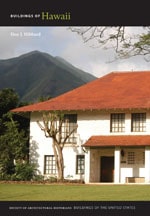
The plantation village at Waipahu Cultural Garden Park comprises nineteen major structures and their associated outbuildings. A microcosm of Hawaii's plantation heritage, the village presents an excellent introduction to the plantation experience and its building forms. The buildings include different examples of plantation housing, ranging in date from 1900 to 1935, as well as a Chinese society building, Shinto shrine, community furo (bath), tofu-ya (tofu store), plantation store, office, infirmary, and social hall. Each house is furnished to reflect the decor of one of the ethnic groups which worked the plantations.
The Chinese cookhouse (1909) and the Inari Shrine (1914) are the only historic structures in the village; the others are replicas of plantation structures found throughout the state. To discourage the relocation of historic structures from their original settings, it was decided to undertake measured drawings of extant buildings and reproduce these at the site. The present Chinese society hall replicates the hall which once stood here, using historic photographs as a guide. Its cookhouse is the only building in the village historically associated with the property.
The Wakamiya Inari Shrine, built by Haschun in 1914, originally stood in Kakaako and then Moiliili prior to being moved to the park in the 1980s, saving it from demolition. Whereas most Shinto shrines have their wooden walls left in a natural state, those of the Inari sect are painted red. The shrine has an irimoya roof with typical Shinto chigi and katsuogi ornamentation on the ridgepole. The building is elevated on posts and has a modest kōhai.

